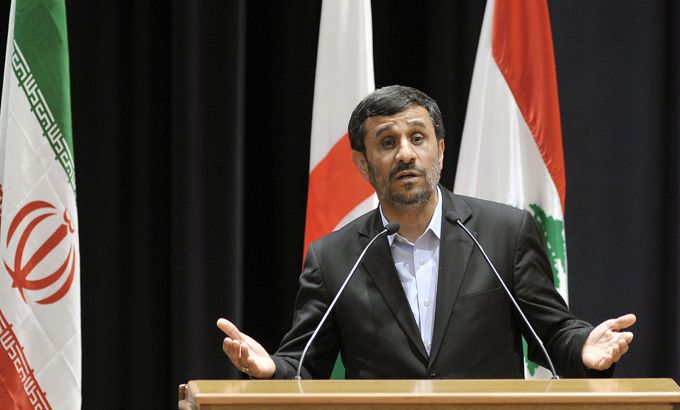Tensions rise amid Iran political feud
Dispute between president and country’s supreme leader intensifies, amid reports of Ahmadinejad’s possible resignation.

A dramatic feud at the highest level of Iran’s government appears to be intensifying, with speculation that president Mahmoud Ahmadinejad may be preparing to resign.
The speculation stems from a political dispute between Ahmadinejad and the country’s supreme leader, Ayatollah Ali Khamenei.
Ahmadinejad sacked the country’s intelligence chief, Heydar Moslehi last month, in a move that Khamenei quickly overruled, reinstating Moslehi.
Following the move, the president effectively went absent without leave, skipping cabinet meetings for 10 days in anger over the reinstatement.
Al Jazeera’s Dorsa Jabbari, reporting from the Iranian capital, Tehran on Sunday, said the president’s decision to skip cabinet meetings is unprecedented in the country, where the supreme leader wields more power than the president and appoints military leaders and the council that passes laws.
“There was a lot of criticism from different camps in this country about his behaviour. He was … accused of allegedly defying the supreme leader, [which is] equivalent to defying God in this country,” she said.
“After allegedly meeting with the supreme leader, where he was urged to return to work, Ahmadinejad did – he returned to work on May 1st.”
Potential successor
The dispute has reportedly led to the arrest of several close allies of the president, as well as allies of the president’s former chief of staff, close aide, and potential successor Esfandiar Mashaei.
Reports say the supreme leader was unhappy about Ahmadinejad’s ties with Mashaei, who has allegedly promoted the slogan “Islam without clerics”.
|
Al Jazeera’s Dareen Abughaida explains the key people involved in the Iranian political dispute |
Mehrdad Khonsari, an analyst with the Centre for Arab and Iranian Studies in London, told Al Jazeera on Friday that the dispute, which began last month, had become “serious”.
“It shows the level of disunity at the very top of the Iranian [political] hierarchy [with] Ahmadinejad having already polarised the internal political scene as a result of fraudulent election results that were announced more than 20 months ago,” Khonsari said.
“He is now beginning to encroach on the powers and privileges vested in the supreme leader, and he and his constituency – mainly among the Revolutionary Guards – have tried to do this.
“And, of course, the supreme leader has tried to make a stand and in this stand he has been joined by many people from the ruling establishment who have been cast aside by Ahmadinejad.”
Khonsari said that since the president came to power “powerful people like [Akbar Hashemi] Rafsanjani and … [Mohammed] Khatami and many of the key reformers as well as the president of the current Council of Experts” have been sidelined.
“This is quite a standoff,” he said. “Ahmadinejad, I think, at this particular time, has bitten more than he can chew and has been forced to essentially step back, but the fact [remains] that both he and the supreme leader are damaged as a result of this conflict.”
‘Polarisation and rivalry’
Although speculation continues that Ahmadinejad may resign, Khonsari stopped short of hinting at the possibility of him quitting and instead said the dispute would lead to “further polarisation; further disunity [and] rivalry … within a state structure that’s already fractured”.
Ahmadinejad’s administration has been dogged by allegations of a fraudulent election, which handed him a second four-year term in office in 2009.
The conduct of the vote led to protests which ended in a deadly crackdown and the detention of key opposition figures, including Mir Hossein Mousavi and Mehdi Karroubi.
Iran has also been hit by a wave of sanctions by the US and the European Union over its nuclear programme, which many Western states suspect is intended to make an atomic bomb.
Tehran says the programme seeks to develop electricity.